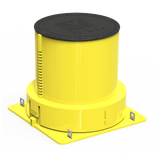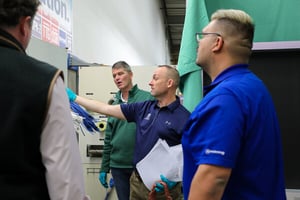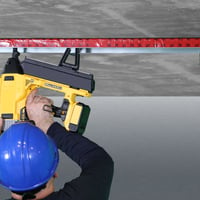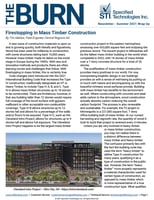SOMERVILLE, NJ -Specified Technologies Inc. (STI), a leading firestop, smoke, and sound building...
STI News
The need for firestopping at penetration and joint locations in new buildings is a fairly well understood requirement within the construction industry. The owner of the building may not be intimately familiar with the individual firestop products and how they perform to protect the structure in the event of a fire, but they are counting on receiving a fully code compliant building at the end of the project. Firestop manufacturers, specialty contractors, AHJs and inspectors make this happen with their expertise and help furnish an end product that protects the safety of the public once the building is certified for occupancy and placed into service. What happens now to these firestops as the months and years pass?
Firestops are usually headache free on their own once installed, but just like the other vital components of a building they merit regular attention to ensure they have not been damaged or disturbed by regular daily activities or the comings and goings of subsequent construction work. Maintenance is critical for firestops and there are requirements outlining the necessary steps within several common codes. A handful of relevant examples from both the International Code Council (ICC) and National Fire Protection Association (NFPA) families of codes are discussed below.
The ICC speaks to maintenance needs primarily through their International Fire Code (IFC), which recently expanded upon maintenance requirements in the 2018 Edition of the Code. Previous versions had outlined maintenance with Section 703.1, and language outlining the need to maintain the fire-resistance-rating of firestops and joint systems is included here. Furthermore, the building owner is required to visually inspect fire-rated construction and the firestops contained within and to repair damage or alterations where detected. The owner must also keep records of these inspections and repairs.
The 2018 Edition of the IFC spells out maintenance requirements in a more ordered fashion than the previous Codes and also contains some expanded requirements. Section 7.01 outlines the responsibilities of the Owner while also specifying individual fire-resistance-rated construction components, such as walls and horizontal assemblies for example, that must be maintained. In addition to the records of inspections and repairs conducted as per previous IFC Editions, the 2018 IFC requires owners to create an inventory of fire-rated assemblies and the firestops contained within these walls and floors. Individual discussions are devoted to penetrations and joints/voids in Sections 703 and 704, respectively. If the specific system for a penetration firestop is known then inspections are compared to that design.
Chapter 4 of the NFPA 101 “Life Safety Code” contains maintenance requirements in Section 4.6.12, and this location along with its requirements are consistent throughout the last several editions of the Code. Fireresistive constructions and systems contained within these assemblies are required to be maintained. A responsible person is designated to supervise inspections and maintenance. The frequency of inspections is left to intervals established by the AHJ or other relevant NFPA standards.
Buildings certainly receive a greater degree of scrutiny in regards to firestopping before they are placed into service. However, the fire safety needs of building occupants do not diminish after that date. It is vital that building owners understand their responsibilities in terms of proper firestop maintenance. Appropriate guidance and requirements are outlined in Codes published by the the ICC and NFPA, and both organizations make free versions of their respective codes available online for concerned parties.





